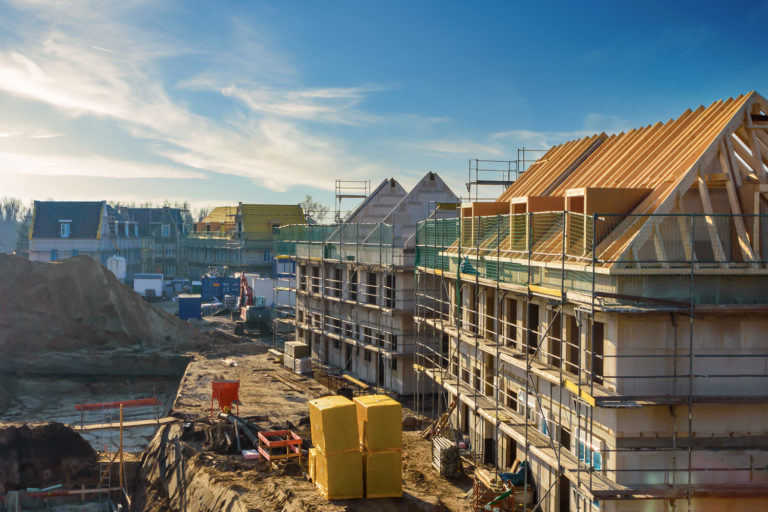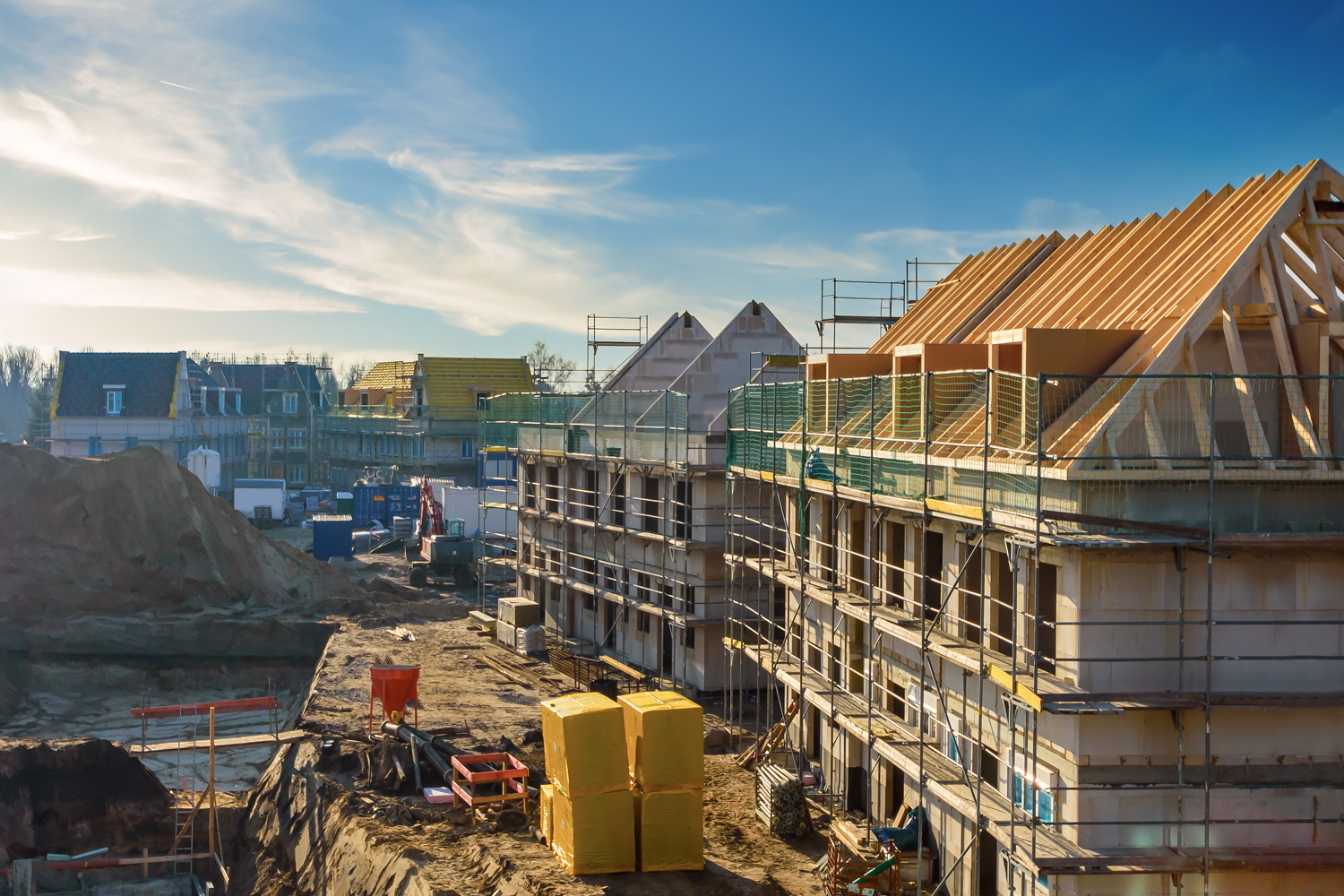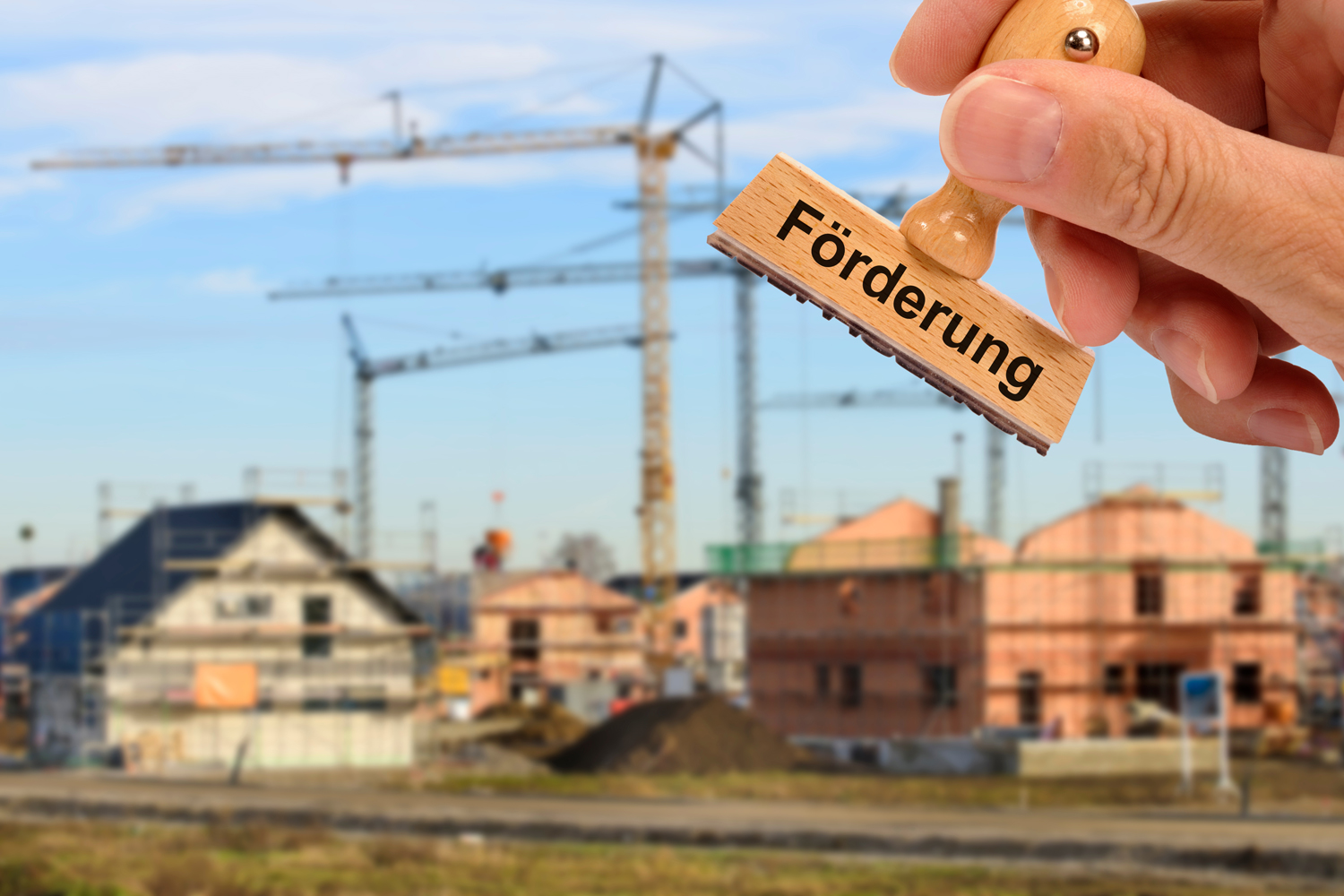Residential Investments in Germany – September 2022
7. Sep 2022

7. Sep 2022

Dear Reader,
In the future, the main focus of government support for energy-efficient housing will shift from new construction to the renovation of existing buildings. At last, that’s what Germany’s coalition government would like to see. There is plenty of room for debate about the pros and cons, and there are good factual arguments on both sides. What is absolutely clear, however, is that new residential construction will lose out.
Perhaps the shift is due to the government secretly binning its goal of creating 400,000 new homes per year. Rising interest rates, skyrocketing construction costs, a bleak economic outlook, sluggish approval processes – the funding freeze is just one more negative factor in a very long list. This is regrettable in two respects: first, nothing has changed in terms of demand; second, real estate has proved itself to be a investment even in times of inflation. On the flip side, undeveloped building plots are likely to come back onto the market in the near future – for resourceful investors with a sharp eye on the bottom line, this also means new opportunities.
The articles in this issue show how, in spite of everything, we must and can continue to work toward greater sustainability in the real estate sector.
We hope you enjoy reading this latest edition of our newsletter.
Jürgen Michael Schick & Holger Friedrichs

Thomas Meyer | Member of the Board, WERTGRUND Immobilien AG
Residential real estate is generally considered stable in value, even in times of inflation, and has long since proven that it is crisis resistant. In terms of sustainability, a large part of the industry is already on the right track. Whether developers or portfolio renovators – many are setting a course for ESG. Consequently, there are also more and more real estate funds with sustainability criteria that not only offer investors the opportunity to enjoy stable returns, but also present the chance to invest in environmentally and socially optimised properties. But how can you tell which funds tick all the right boxes?
The EU’s agreement on the European Green Deal was the logical consequence for many industries after Paris 2015. Since it was launched in December 2019, Europe has been working intensively towards the noble goal of net zero greenhouse gas emissions by 2050. To get there, the EU has set numerous interim targets, including for the real estate sector. For example, according to the latest proposals from the EU Buildings Efficiency Directive, the annual building renovation rate needs to double by 2030, the deadline for phasing out fossil fuels is 2040, there will be a new energy certificate from 2025, plus a mandatory renovation passport by 2025, all of which are designed to accelerate the carbon phase-out.
EU taxonomy provides investors with a road map
The transparency requirements and disclosure obligations for sustainable financial products are defined in the Sustainable Finance Disclosures Regulation (SFDR), which distinguishes between Article 6, Article 8 and Article 9 funds. According to the EU regulation, Article 6 funds are financial products that must disclose whether or not they take sustainability risks into account. Article 8 funds must transparently disclose sustainability features in their annual reports and are commonly referred to as “light green” funds. The designation “dark green” is given to Article 9 funds that aim for a positive sustainability impact or pursue an explicit sustainability goal as defined by the UN. Such investments, known as impact funds, must measure and demonstrate the degree of their impact.
New rules apply to all financial investment products as of 2 August 2022
From 2 August 2022, the new version of the Markets in Financial Instruments Directive (MiFID II) will come into force. From this date on, investors must be asked about their sustainability preferences whenever they are given financial advice. The question – after explaining the different levels of sustainability – will be something like: “Would you rather invest in a sustainable product or a less sustainable fund?”
Anyone who expresses a preference for sustainable products will then only be offered funds that also fulfil the specific criteria set out in the EU Taxonomy and meet the requirements of the MiFiD II Directive. Depending on the orientation of the fund, these requirements stipulate that a certain proportion of the fund portfolio must meet the same, particularly high requirements, as an “impact” product. Accordingly, the fund’s strategy will have to take into account the largest potential adverse sustainability impacts of its investment decisions. It won’t be enough to simply disclose information on specific environmental and social factors. Rather, tangible information will be required on specific environmental, social and labour concerns, including respect for human rights and the fight against corruption and bribery. Funds whose policies meet these requirements will be classed as Article 8 Plus Funds. In this way, the MiFiD Directive offers investors a sound basis for their decision-making and at the same time helps to prevent greenwashing.
The high bar for sustainability
No sooner had the SFDR been passed than the number of Article 8 funds skyrocketed. In order to ensure that these funds can actually be recommended to investors as sustainable investment products, Germany’s financial regulator, the BaFin, attempted to raise the bar significantly in its draft guidelines published in April 2021. The idea of Germany going it alone in this area has since been blocked and, at least for now, withdrawn. The discussion is ongoing and open-ended. For the time being, Article 8 Plus is defined via the MiFiD II Directive. Nevertheless, the issue of greenwashing cannot be dismissed out of hand. It is highly unlikely that the BaFin’s initiative will be the only one for Germany, especially since the regulation is by no means final. In the taxonomy for sustainable economic activities, the EU has prioritised climate protection. In the meantime, however, a final report on the social taxonomy has been published, placing the focus on corporate due diligence with regard to social and labour standards. This poses great challenges for asset managers of real estate funds in particular.
How can real estate meet ESG criteria?
Real estate fund asset managers can make a big difference with a consistent ESG strategy. They can, for example, invest in projects that use climate-friendly construction methods and low land consumption, or by regularly striving to optimise their portfolios. Positive environmental impacts can be achieved in new construction through densification of undeveloped areas or by adding extra storeys to buildings and converting attic spaces. Existing properties benefit from an increased use of renewable energies, the generation of solar power by photovoltaic systems, the use of rainwater, and a well-thought-out waste management strategy. Positive social impacts are achieved via the creation of affordable housing and sensible quarter and neighbourhood development with inclusionary and multigenerational housing as well as affordable housing units. Investors can find information on methodology, measurement, monitoring and evaluation in each fund’s sales literature and annual reports.
Article 8 Plus is a seal of approval for real estate funds
We believe that the real estate industry is going in the right direction. If investors prefer to invest in a real estate fund with sustainability features as of 2 August, they will be best served with an Article 8 Plus fund. This is because only funds that take account of investors’ sustainability preferences in accordance with the revised MiFiD II Directive may be marketed to this investor group from then on. In a way, 8 Plus proves that change is in full swing in the real estate industry – which is now offering products tailored specifically to these requirements.

Christian Paul | CEO, Fundamenta Group Deutschland AG
Declaring funds “light green” or “dark green” in terms of the EU Disclosure Regulation continues to be a slow process. One and a half years after the regulation came into force with the aim of making ESG compliance more transparent for investors, fund providers are still reluctant to apply for authorisation as Article 8 or 9 funds for the majority of their products. The same is true of real estate funds. There are understandable reasons behind the industry’s reticence, but they are all inadequate.
Many are still hoping for clearer guidelines from the regulator about what a fund must bring to the table in order to be deemed “light green” or “dark green”. Cases of greenwashing in the media have damaged individual company’s reputations – and such debacles are to be avoided at all costs.
But if companies want to wait, they will have to wait a long time. There will be no reasonably comprehensive, binding criteria to define the exact meaning of “sustainable” for a few years at the earliest. The EU Taxonomy still only covers a relatively narrow band of economic activities. The broad and increasingly important field of social sustainability, for example, is still a blank regulatory slate. In the field of environmental sustainability, the first revisions have already arrived, and this will become more and more common over the next few years as technologies develop.
Short-sighted thinking
There are also quite a few who shy away from the impact that classification as an Article 8 or 9 fund could have on their returns. But this is short-sighted thinking. Sure – as a green fund you are subject to certain restrictions and your investment universe is reduced. Refurbishing building stock to make it more energy-efficient requires huge investment. All this has an impact on returns – even more so for “dark green” products than for “light green” ones.
But while some are dithering, others are forging ahead and staking their claims on the market. As early as last November, a survey from the investment company Empira found that only a quarter of investors will still be willing to invest in funds that do not qualify under Article 8 or 9 in the future. While some providers are sticking by products that are to be slow sellers in years to come, others are investing in the products that will be the standard a few years from now.
It’s not rocket science
These first-movers have recognised that they themselves are in the best position to assess which adjustments in their portfolio will have the most positive impact in terms of sustainability. They have developed scoring models with which to evaluate potential real state acquisitions and their existing portfolios from an ESG perspective. In the real estate industry, there are numerous starting points for environmental sustainability that are easy to define and quantify, such as a building’s energy efficiency or the share of renewable energies in the energy mix. Other criteria can be used to assess social sustainability, such as accessibility and social rent policies.
These companies have also defined how to apply sustainability criteria in the acquisition process and to the properties in their existing portfolios. In many cases, they have specified a binding roadmap, setting out how and when to improve the scoring of the buildings in their portfolios, for example through energy-efficiency refurbishments.
The providers already have access to the necessary data, and the development and institutionalisation of processes within the company is not rocket science. But anyone who puts off making the necessary adjustments for too long will have a hard time in the medium term, especially in a market where sustainable products are becoming the standard.

Hannah Helmke | Founder and CEO of right
Climate change is probably the greatest existential threat humanity has ever faced. By now, most people have realised that we finally need to tackle climate change with all available means. And the real estate industry has a key role to play, as it accounts for about one third of total CO2 emissions. But hardly anyone knows what environmental impact the operation of their own home or investment in residential property really has – and which mitigation measures are most efficient from a climate protection point of view.
Carbon efficiency is usually measured in terms of CO2 emissions in metric tons. But who has any idea what that actually means? A return flight from Frankfurt to Rome equates to about half a ton of CO2 emissions. But is that a lot or a little? And what impact does a metric ton of CO2 emissions have on climate change? It becomes even more difficult when you consider that the timing of CO2 emissions also plays an important role in the impact a ton of CO2 has on global warming.
Emission levels alone tell us very little
In the face of such complicated calculations, the impact of different levels of carbon emissions remains almost incomprehensible. And that’s despite the fact that the Paris Agreement even set a carbon emissions budget to give the world a 50% chance to limit warming to 1.5 °C. In order stand a chance of limiting global warming to a maximum of 1.5 °C, a little less than 300 billion tons of “permissible” emissions remain. The precise impact of one ton of CO2 emissions on the climate remains very, very abstract. In fact, setting such an apparently high budget actually tends to encourage a more careless approach and discourages them from taking personal responsibility for the climate. By the way, the correct physical unit for measuring global warming is not kilograms or metric tons, but degrees Celsius (°C).
Clarity counts
This is why new methods for illustrating climate impact are becoming increasingly important. The hot topic right now is “temperature alignment”. This approach takes the remaining emissions budget as the basis for an emissions reduction model and uses it to evaluate how much the planet would warm if the whole world had the same climate performance as the entity or portfolio under consideration. As a result, instead of just seeing that the operation of a particular residential property generates X metric tons of CO2 in period Y, temperature alignment allows us to understand whether the entity or portfolio meets the target of a maximum of 1.5 °C of global warming – or not.
Since these climate pathways or climate budgets are calculated for all economic entities, we can also compare the climate impacts of entire companies, industries, assets and asset classes.
Such transparency can be particularly important for the real estate sector, which, as a climate-intensive sector, will be strategically important for combating climate change. This applies equally to new buildings, where various scenarios and the resulting climate warming can be simulated at the planning stage, as well as to existing properties, where their climate impact can be made apparent via the emission intensity of the property.
Simulation makes mitigation measures more effective
What is the climate impact of the building I own or live in? Is it a 3.0 °C, a 2.0 °C or a Paris-compliant 1.5 °C building? If it doesn’t comply with the Paris Agreement’s target, it might be worth carrying out an energy retrofit. But where should you start? Temperature alignment offers a solution for this as well, because it can also be used to simulate a wide range of renovation measures. The climate impact of an individual measure depends not only on the CO2 savings it delivers, but also on the timing of the measure and the order in which a package of measures is implemented, because, after all, it is seldom possible to remedy all deficiencies at the same time. What counts for the climate is not the emissions on some future day X, but the sum of the emissions over the entire period up to that date.
With just a few clicks of the mouse, temperature alignment-based metrics allow us to determine which measures would be the most effective in order to make the renovation as efficient and environmentally friendly as possible – including from an economic perspective. It may be a new heating system that transforms the building from a 2.5 °C to a 1.5 °C building, or it may be new facade insulation – or both, but in which order? Using temperature alignment in any simulations certainly makes such decisions easier than ever before.
The translation of emissions into °C thus enables property owners to specifically address the impact of their properties on global warming and take prompt action to position their properties for a long-term and 1.5 °C compliant future. Try it out for yourself.

Jürgen Michael Schick, FRICS | Präsident des IVD, Immobilien Verband Deutschland e.V.
Interest rates on construction loans are rising, material costs continue to increase, and there is a shortage of available financing. As a result, a host of new construction projects are being rescheduled. Numerous construction projects are even being cancelled completely given the challenges of the current market environment. Banks are demanding more equity from developers. Some institutions are now subjecting the credit rating of the general contractor to the same intensive scrutiny as they do to the credit rating of the developer. On top of all that, it is also becoming increasingly difficult to achieve the critical 50 per cent sales quota that is required for many construction loans. In parallel, some institutional investors are withdrawing from the market completely, or at least thinking about reducing their real estate quotas. Since it usually takes institutional investors some time to implement major investment strategy realignments, they are often the investors who miss the best time to re-enter the market or buy newly attractive assets, while private and commercial players can be much quicker to discover opportunities as they emerge and have the real estate market more or less to themselves.
For all the reasons listed above, a significant number of building plots are currently coming back onto the market. This is not primarily in order to sell them on at a profit, but because the owners’ original plans can no longer be executed. As a result, there is currently far less new construction than would be necessary. At the same time, housing markets in Germany’s major cities remain tight. Demand for rental apartments remains high. However, completions of new buildings are set to decline noticeably for the reasons mentioned above. The noble wish of Germany’s “traffic light” coalition government to support the development of 400,000 new apartments every year is unachievable.
What does this mean for owners and sellers of existing properties? As the market shifts, this will be increasingly felt in the residential investment market. The impact of higher interest rates will be impossible to ignore. There will be no way to achieve the kind of excessive fantasy prices the market has become used to in recent years. In the third and fourth quarters of this year, we will see just how stable the market for rental properties is and how great the pressure on prices will actually become. Even if some buyers adopt a “wait and see” approach for the time being, apartment buildings and residential complexes will remain in demand. Whether and to what extent there will be price corrections also depends on the location and quality of each property.
The decline in new construction – and you don’t need to be a prophet to see this – makes a sharp price correction for existing properties rather unlikely. Of course, profitability criteria prevail for most investors. Apartment buildings and residential complexes must remain profitable as the market environment evolves. Given the strong demand for housing in tight housing markets, the decline in new construction at the same time provides a boost to the market for existing properties.
In 2022, the real estate market is, therefore, also a market full of opportunities.

The shortage of available (and affordable) housing on Berlin’s residential real estate market has prompted the city’s Senate to launch an alliance with municipal districts, cooperatives, real estate companies and industry associations. The alliance’s members all signed a 22-page agreement at the end of June and committed to the goals of creating 100,000 new apartments by the end of 2026, significantly simplifying building permit procedures, and easing the housing burden for low-income households. The necessary development plans should be in place within three years, and funding of 740 million euros per year has been earmarked in the Senate’s budget for 2022 and 2023 to promote social housing. The major housing companies, including Vonovia, also promised to ensure that 30 per cent of all re-rentals go to tenants with housing entitlement certificates. Franziska Giffey (SPD), the governing mayor, expects more signatories to join in the next few months.
This year, the housing industry expects heating costs to rise by more than 50 per cent. Maren Kern, board member of the Association of Berlin-Brandenburg Housing Companies, assumes that heating costs will continue to rise significantly. According to Kern, the federal government’s taxable, one-off heating grant of 300 euros is nowhere near enough to help households cover the imminent increases. The government’s hardship fund is a first step in the right direction, she said, but she also appealed to tenants to follow their housing company’s recommendations and make voluntary advance payments for heating costs, or to start putting money aside themselves. Meanwhile, Georg Friedrichs, the head of Gasag, Berlin’s largest utility company, has appealed to households in Berlin to reduce room temperatures whenever possible in the autumn. According to Friedrichs, just one degree Celsius less will reduce a household’s energy consumption by seven per cent.

After Federal Finance Minister Christian Lindner (FDP) scheduled initial consultations on reforming Germany’s real estate transfer tax system to give the country’s federal states more freedom and thereby make it easier to buy and sell real estate, the SPD is working on other instruments to promote homeownership. Kevin Kühnert (SPD) is pushing for a state programme to replace equity in the purchase of residential property. The aim is to enable households with stable incomes but without large financial reserves to buy their own homes. Jürgen Michael Schick, President of the German real estate association IVD, has welcomed this initiative. The largest hurdle for many potential buyers is having a big enough deposit for a home, which is why young families in particular often need to rely on inheritances or support from their parents. As interest rates on construction loans have risen, it has become virtually impossible for people to build their own homes from their regular incomes alone, according to the IVD.